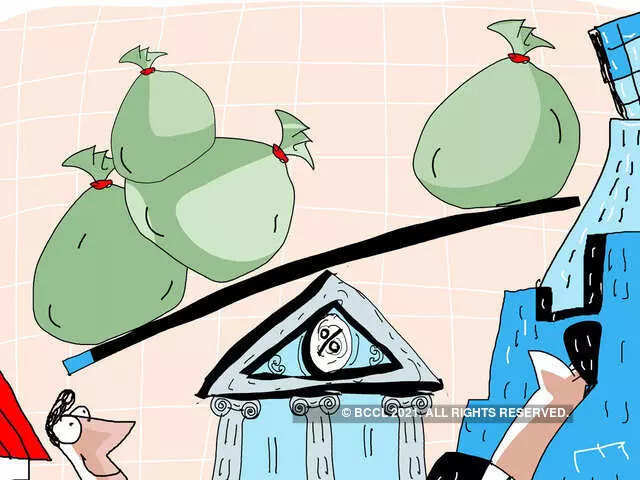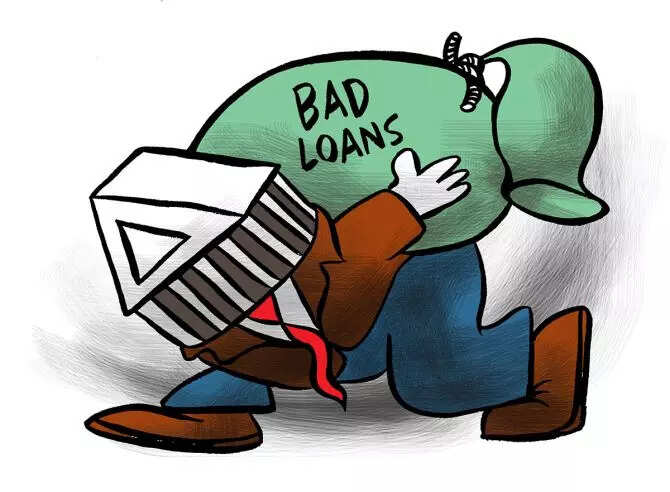State-owned banks and private banks have so far sanctioned loans worth over Rs 11,000 crore under the credit outreach programme. “As part of the government’s nationwide credit outreach programme that commenced on Oct 16, all
PSU banks and private banks have sanctioned more than 193,000 loans totalling 111.68 bln rupees,” Finance Minister
Nirmala Sitharaman‘s office tweeted.
Lenders sanctioned loans through 924 camps held in 405 districts from October 16-20.
The loan mela
Over 1 lakh borrowers availed business loans of about Rs 6,268 crore, followed by 62,616 borrowers availing agriculture loans of about Rs 1,874 crore.
Earlier this month, the finance ministry has asked PSU banks to start a nationwide loan outreach programme ahead of the festive season, and later.
Banks were asked to set targets of loans to be sanctioned during the district-wise outreach programme. They were also told to tie up with FinTech firms and non-banking financial companies to disburse loans to even small borrowers.
The banking system is bloated with liquidity, which has jumped from Rs 4.5 lakh crore in 2019 to over Rs 7.5 lakh crore currently, mainly due to weak credit demand.
The finance ministry feels that various sectors need credit support and asked banks to hold talks with exporters and various associations to support their loan needs.
FM announcement
Finance Minister Nirmala Sitharaman had announced a district-wise outreach to be undertaken by banks to help credit growth from October.
A push to credit growth from such outreach efforts will also help the momentum set by the stimulus packages, which have been extended by the government since the onset of the pandemic.
In late 2019, banks had conducted the “loan melas” in 400 districts to push up sagging credit growth. Even now, the credit growth is stuttering at around 6 per cent.
“I think it is too early to conclude whether there is a lack of demand… I don’t think it is time yet to conclude that there is no credit pick-up. Even without awaiting indications, we have taken steps to ramp up credit,” Sitharaman had said.
She noted that over Rs 4.94 lakh crore was disbursed by banks between October 2019 and March 2021 through the outreach initiatives.
Gross NPAs may rise
Gross non-performing assets (NPAs) of banks are expected to increase to 8-9 per cent in the current financial year, credit rating agency Crisil said in a report.
This will be well below the peak of 11.2 per cent seen at the end of fiscal 2018.
According to the agency, the COVID-19 relief measures such as the restructuring dispensation, and the Emergency Credit Line Guarantee Scheme (ECLGS) will help limit the rise in banks gross NPAs.
With around 2 per cent of bank credit expected under restructuring by the end of this fiscal, stressed assets comprising gross NPAs and loan book under restructuring should touch 10-11 per cent this fiscal, it said.
“The retail and MSME segments, which together form close to 40 per cent of bank credit, are expected to see higher accretion of NPAs and stressed assets this time around,” the agency’s senior director and deputy chief ratings officer Krishnan Sitaraman said in the report.
Stressed assets in these two segments are seen rising to 4-5 per cent and 17-18 per cent, respectively, by this fiscal end, he said.
The agency said the operationalisation of the National Asset Reconstruction Company Ltd (NARCL) by the end of this fiscal and the expected first-round sale of Rs 90,000 crore NPAs could lead to lower reported gross NPAs.
The report expects the corporate segment to be far more resilient. A large part of the stress in the corporate portfolio had already been recognised during the asset quality review initiated five years ago.

